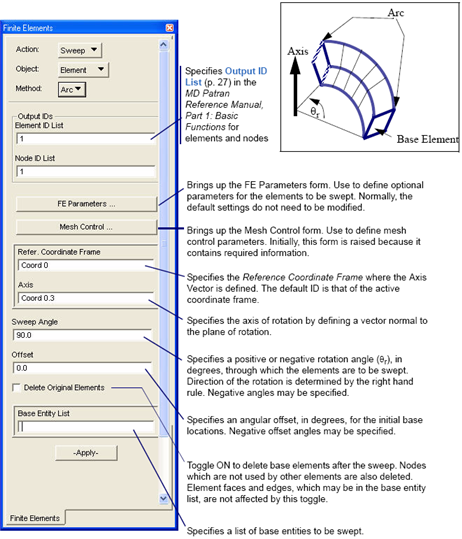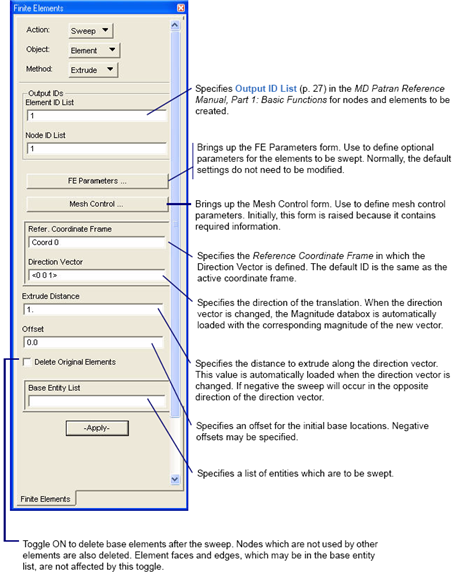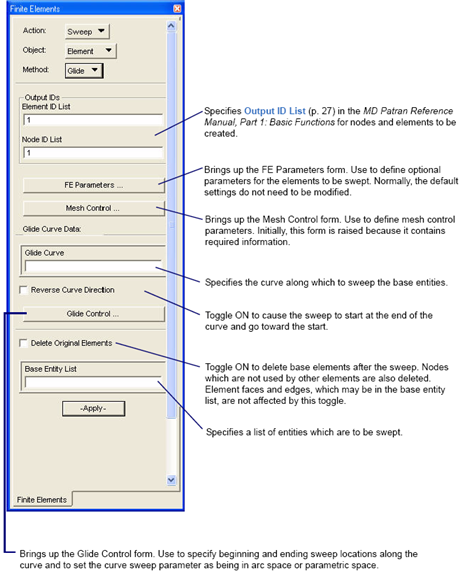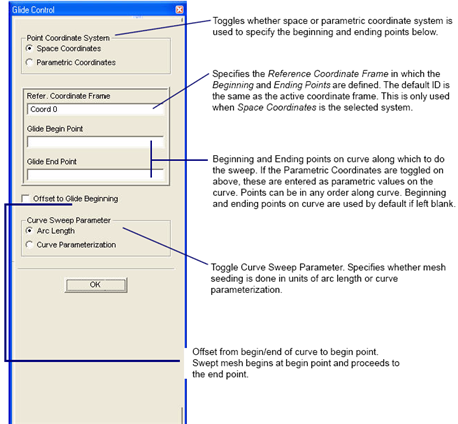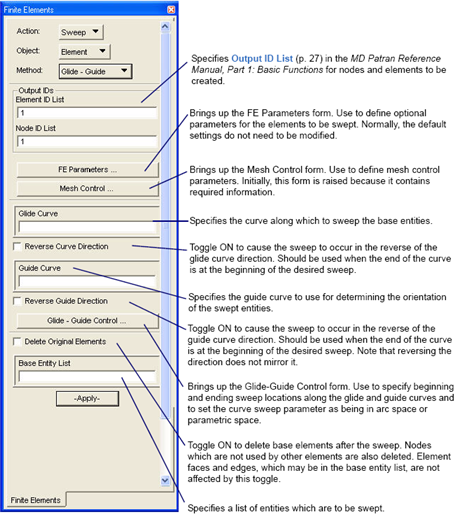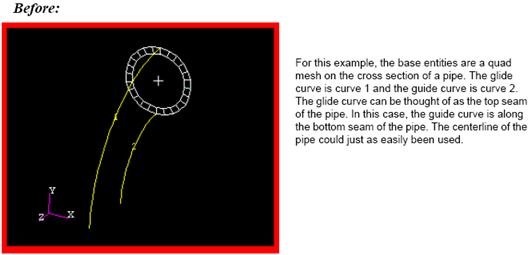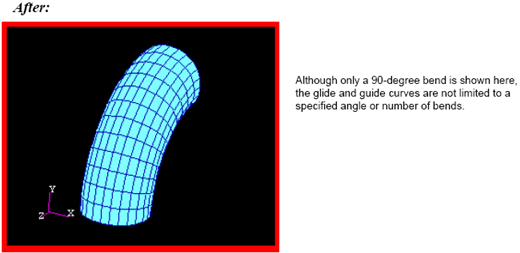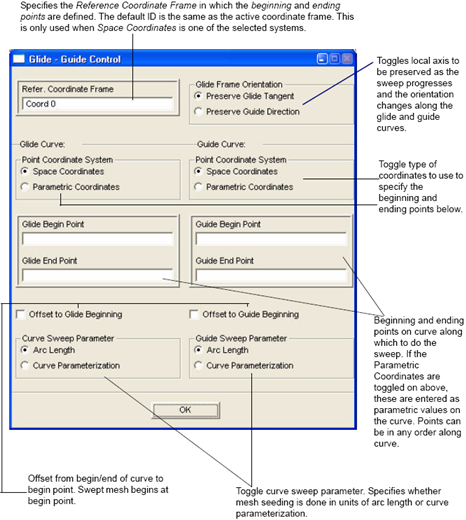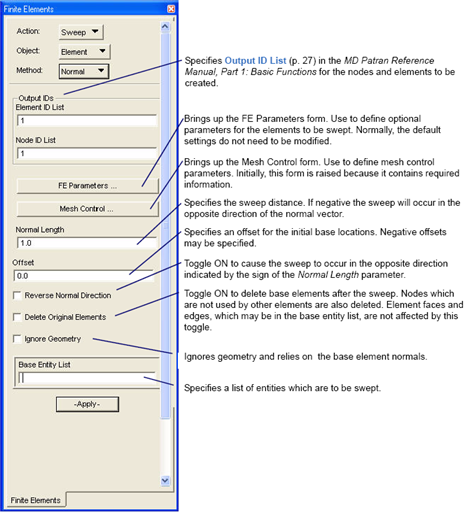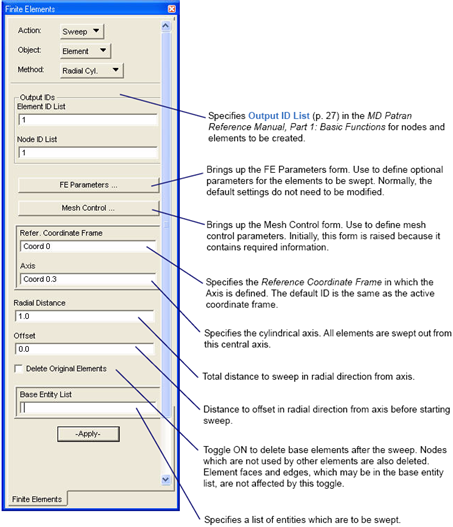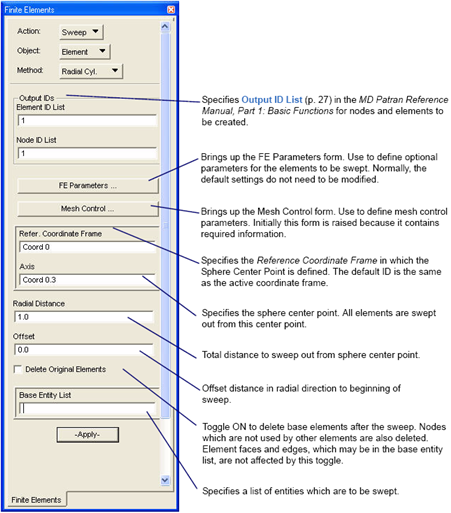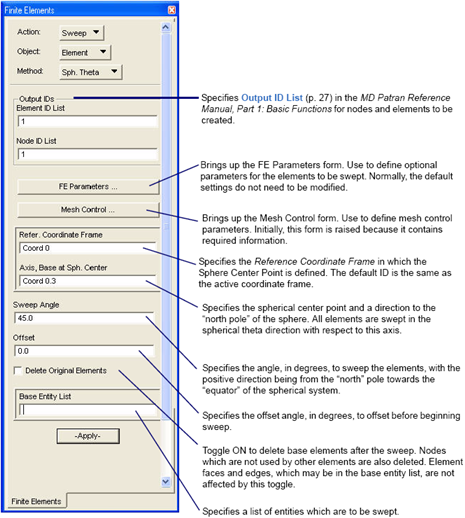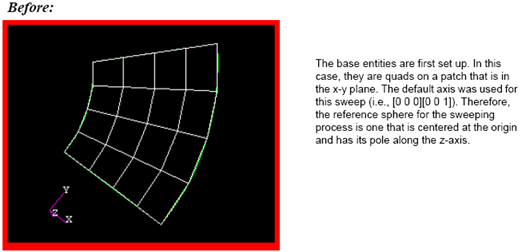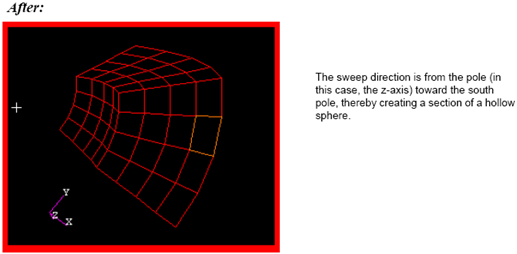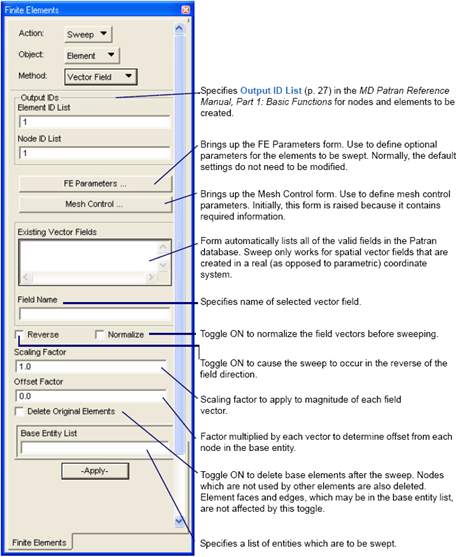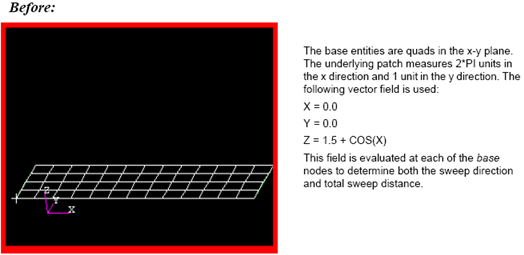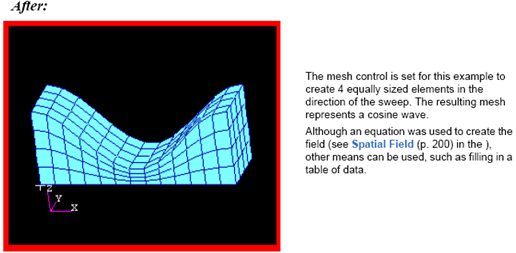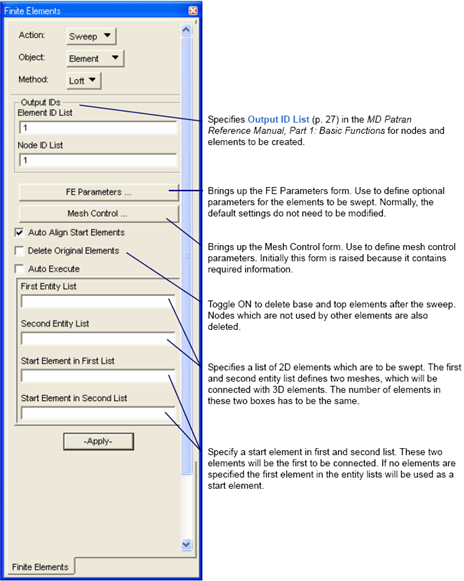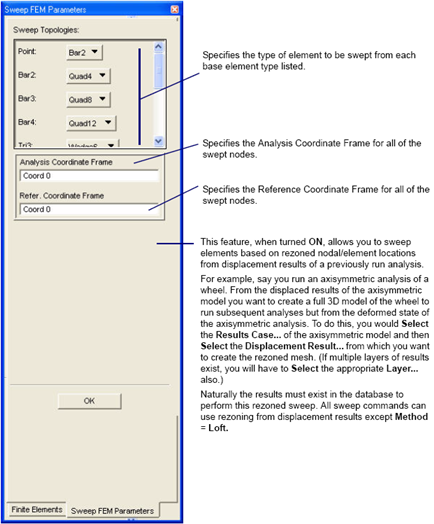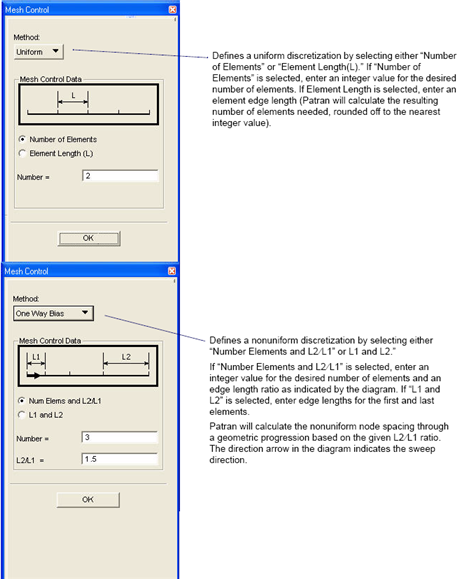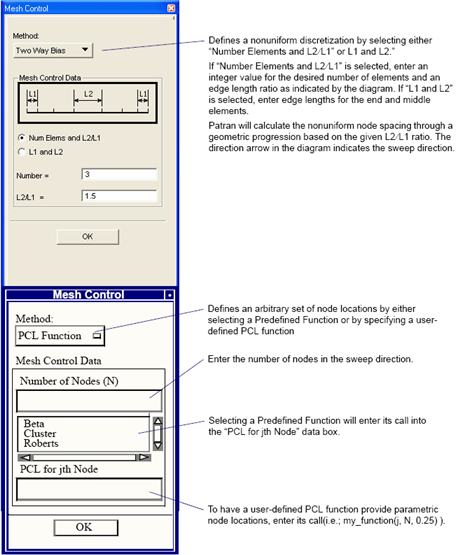XXXXXXXXXXXXXXXXXXXXXXXXXXXXXXXXXXXXXXXXXXXXXXXXXXXXXXXXXXXXXXXXXXXXXXXXXXXXXXXXXXXXXXXXXXXXXXXXXXXXXXXXXXXXXXXXXXXXXXXXXXXXXXXXXXXXXXXXXXXXXXXXXXXXXXXX''"> Sweep Forms
The following options are available when Sweep is the selected Action and Element is the selected Object.
Method | Description |
| The Arc method allows the creation of one or more elements by sweeping a surface element about an axis of rotation. |
| The Extrude method allows creation of one or more elements by moving a base element through space along a defined vector. |
| The Glide method allows the creation of one or more elements by sweeping the base element along the path of a glide curve. |
| The Glide-Guide method allows the creation of one or more elements by sweeping the base element along the path of a glide curve, while the orientation with respect to the base is determined by means of a guide curve. |
| The Normal method allows creation of one or more elements by sweeping a base of element in a normal direction. |
| The Radial Cylindrical method allows creation of one or more elements by sweeping the base element through space radially outward from a center axis. |
| The Radial Spherical method allows creation of one or more elements by sweeping the base element through space radially outward from a center point. |
| The Spherical Theta method allows creation of one or more elements by sweeping the base element through space along a path on a sphere that is like sweeping in the latitude direction in the earth’s latitude and longitude system. |
| The Vector Field method allows creation of one or more elements by sweeping a base element in a direction as determined by evaluating a vector field at each of the base nodes. |
| The Loft method allows creation of one or more elements by sweeping a 2D base element to the location of a 2D top element. The two meshes have to be topological congruent. |
The Arc Method
The Arc method allows the creation of one or more elements by sweeping base entities about an axis of rotation, as shown below. The element edge length in the swept direction is defined explicitly, similar to creating a mesh seed for the meshing function.
The Extrude Method
The Extrude method allows creation of one or more elements by moving a base entities through space along a defined vector. The extrusion vector is applied to each listed entity.
The Glide Method
The Glide method allows the creation of one or more elements by sweeping the base element along a portion or all of a glide curve. The glide curve can exist anywhere in the model and can be traversed in either direction.
Glide Control
The Glide Control allows curves in the model to be used without having to perform simple operations such as break and translate. It also allows for sweeping to be done in arc length or parametric coordinates along the curve.
The Glide-Guide Method
The Glide-Guide method allows the creation of one or more elements by sweeping the base element along the path of a glide curve, while the orientation with respect to the base is determined by means of a guide curve. The sweep offset is determined by the glide curve. The orientation is determined by the glide curve tangent direction and the direction to the guide curve.
The Glide-Guide method allows sweeps to be swept and rotated along a desired path. One good application of this method is that of meshing a pipe as it goes around a bend.
Glide-Guide Control
The Glide-Guide Control allows curves in the model to be used without having to perform simple operations such as break and translate. It also allows for sweeping to be done in arc length or parametric coordinates along the curve. Note that for Glide-Guide, the beginning or end of the curves should touch the base elements for best results. Otherwise, undesirable results may occur due to the large effect of orientation’s rotations on the base entities.
The Normal Method
The Normal method allows creation of one or more elements by sweeping base entities in a normal direction. If the base elements are associated with geometry, the normal direction for each node will be the surface normal at that location. If the elements are unassociated, the normal direction will be the average of the element normals of all the elements in the base entity list referencing the node.
For unassociated base elements, the normals must be consistent. If not, an error is reported and execution terminated.
The Radial Cylindrical Method
The Radial Cylindrical method allows creation of one or more elements by sweeping the base element through space radially outward from a center axis.
The Radial Spherical Method
The Radial Spherical method allows creation of one or more elements by sweeping the base element through space radially outward from a center point.
The Spherical Theta Method
The Spherical Theta method allows creation of one or more elements by sweeping the base element through space along a path on a sphere that is like sweeping in the latitude direction in the earth’s latitude and longitude system.
The following is an example of how the spherical theta method can be used to mesh a section of a hollow sphere:
The Vector Field Method
The Vector Field method allows creation of one or more elements by sweeping a base element in a direction determined by evaluating a vector field at each of its nodes.
The following is an example of how the vector field sweep could be used:
The Loft Method
The Loft method allows creation of one or more elements by sweeping a 2D base element to the location of a 2D top element. The two meshes have to be topological congruent.
FEM Data
This form appears when the FE Parameters button is selected on any of the Sweep forms.
Mesh Control Data
Several Methods for defining either uniform or nonuniform discretization in the sweep direction are available. For the nonuniform methods, Patran will calculate the node spacing through a geometric progression based on the given L2⁄L1 ratio.
